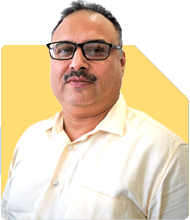Kanchan Rai |646 Answers |Ask -Follow
Relationships Expert, Mind Coach - Answered on Oct 31, 2023
Rai has a degree in leadership development and customer centricity from Harvard Business School, Boston. She is an internationally certified coach from the International Coaching Federation, a global organisation in professional coaching.... more

I am 45 year age married male I am regularly see YouTube and purchase machinery to do self business but I don't I only kept machinery at home and each day plan i will do tomorrow also I have taken huge loan which emi is spell burden on me me social and financial life is affected I think positive business but I don't apply practically only watch intresting YouTube machine printing etc what shall I do sir ?
Assess Your Situation: First, take a step back and assess your financial situation and the impact of your actions. Understand the severity of the problem, how it's affecting your social and financial life, and your overall goals.
Set Clear Goals: Define specific and achievable business goals. What exactly do you want to achieve with the machinery you've purchased? Having clear objectives can help you stay focused.
Create a Business Plan: Develop a detailed business plan that outlines your business idea, target market, competition, revenue model, and financial projections. A well-thought-out plan can serve as a roadmap for your business.
Seek Professional Advice: Consider seeking advice from a financial advisor or business consultant. They can help you better manage your finances and develop a practical plan for your business.
Budget and Financial Management: Review your budget and financial situation to determine how to manage your loan and EMI payments. If necessary, explore options like debt consolidation, refinancing, or extending your loan term to ease your financial burden.
Time Management: You mentioned procrastination. Work on your time management skills to ensure you allocate time each day to work on your business. Create a schedule, set daily tasks, and stick to them.
Accountability: Share your goals and progress with someone who can hold you accountable, like a friend, family member, or a business mentor. Regular check-ins can help keep you on track.
Start Small: Rather than trying to do everything at once, break down your business plans into smaller, manageable steps. Start with a small-scale project to build your confidence and experience.
Learn with a Purpose: Continue to watch educational YouTube videos, but do so with a purpose. Apply what you learn immediately to your business. Don't get caught in a cycle of just consuming content without taking action.
Mindset Shift: Reflect on your motivations and identify any mental barriers that may be holding you back. Sometimes, fear or self-doubt can paralyze us. Working on your mindset and self-confidence can be crucial.
Networking: Connect with people in your industry or niche. Join relevant online forums, attend networking events, and build relationships with potential customers, partners, and mentors.
Adaptability: Be prepared to adapt your business plans as you gain more experience and feedback. Flexibility is essential for success in entrepreneurship.
Stay Persistent: Building a successful business takes time and effort. It's normal to encounter setbacks and challenges. The key is to stay persistent and keep moving forward.
Remember that taking action is the most crucial step. You may not have all the answers, but by starting and learning along the way, you can make progress and work towards achieving your business goals. It's essential to be patient with yourself and seek support when needed.
You may like to see similar questions and answers below
Chandu Nair | Answer |Ask -Follow
VC, Angel Investing, Entrepreneurship Expert - Answered on Jul 02, 2023
Baqar Iftikhar Naqvi | Answer |Ask -Follow
Start-up Mentor - Answered on Nov 02, 2023
Nayagam P P |10854 Answers |Ask -Follow
Career Counsellor - Answered on Dec 14, 2025
Radheshyam Zanwar |6744 Answers |Ask -Follow
MHT-CET, IIT-JEE, NEET-UG Expert - Answered on Dec 14, 2025
Radheshyam Zanwar |6744 Answers |Ask -Follow
MHT-CET, IIT-JEE, NEET-UG Expert - Answered on Dec 14, 2025
Dr Dipankar Dutta |1840 Answers |Ask -Follow
Tech Careers and Skill Development Expert - Answered on Dec 14, 2025
Dr Dipankar Dutta |1840 Answers |Ask -Follow
Tech Careers and Skill Development Expert - Answered on Dec 13, 2025
Dr Dipankar Dutta |1840 Answers |Ask -Follow
Tech Careers and Skill Development Expert - Answered on Dec 13, 2025
Mayank Chandel |2575 Answers |Ask -Follow
IIT-JEE, NEET-UG, SAT, CLAT, CA, CS Exam Expert - Answered on Dec 13, 2025
Radheshyam Zanwar |6744 Answers |Ask -Follow
MHT-CET, IIT-JEE, NEET-UG Expert - Answered on Dec 13, 2025
Mayank Chandel |2575 Answers |Ask -Follow
IIT-JEE, NEET-UG, SAT, CLAT, CA, CS Exam Expert - Answered on Dec 13, 2025
Mayank Chandel |2575 Answers |Ask -Follow
IIT-JEE, NEET-UG, SAT, CLAT, CA, CS Exam Expert - Answered on Dec 13, 2025
























